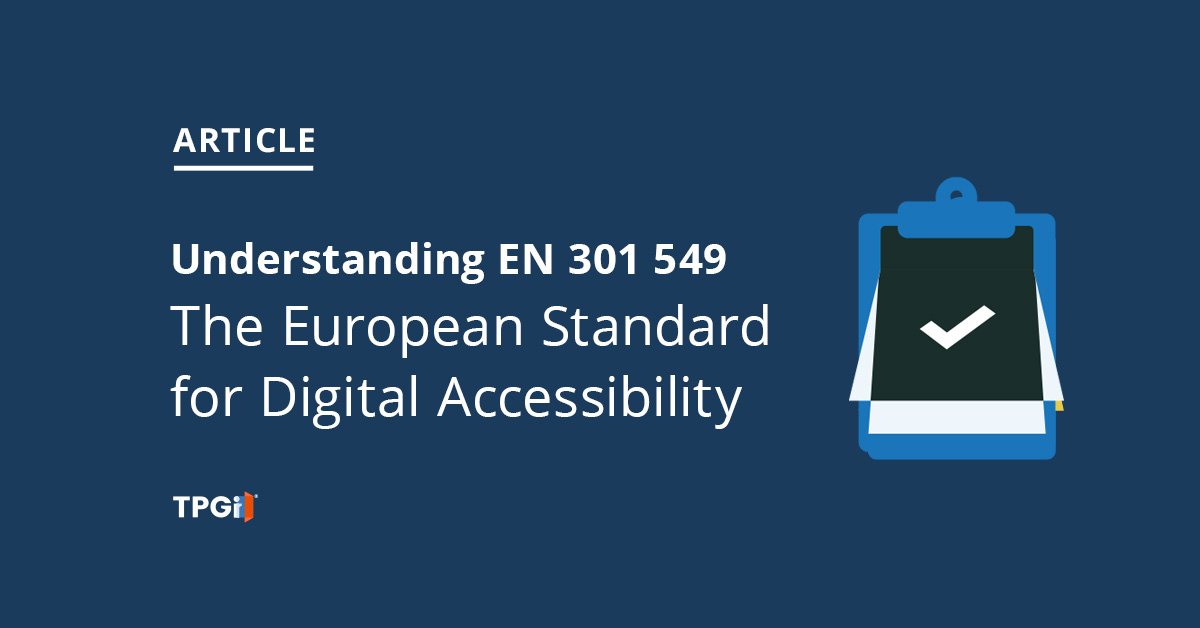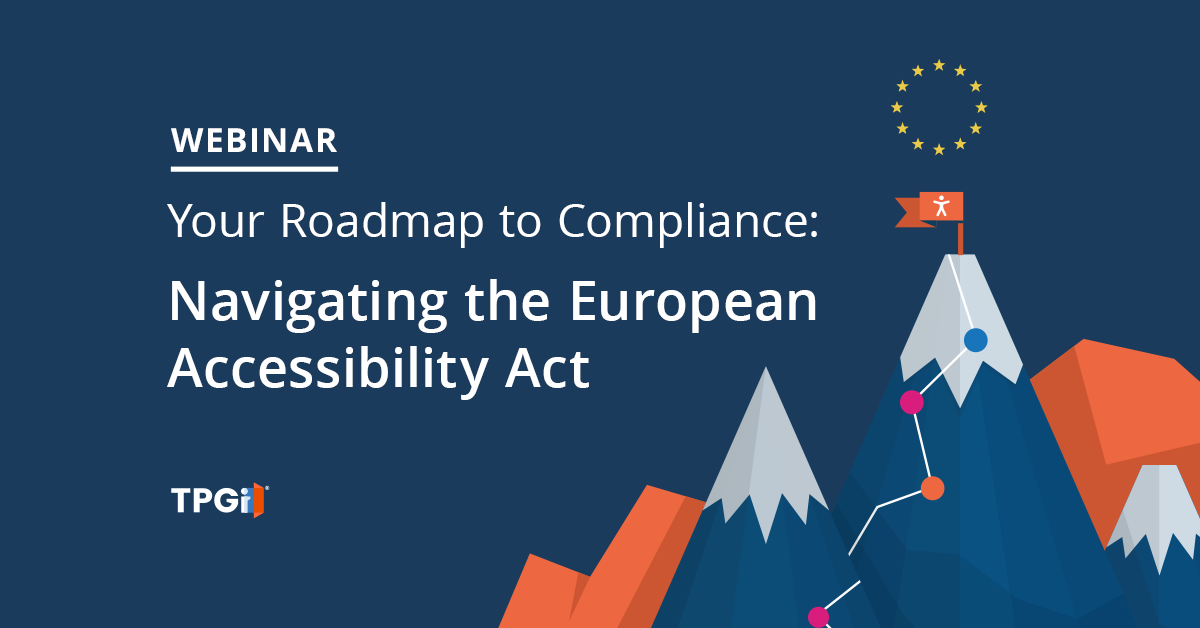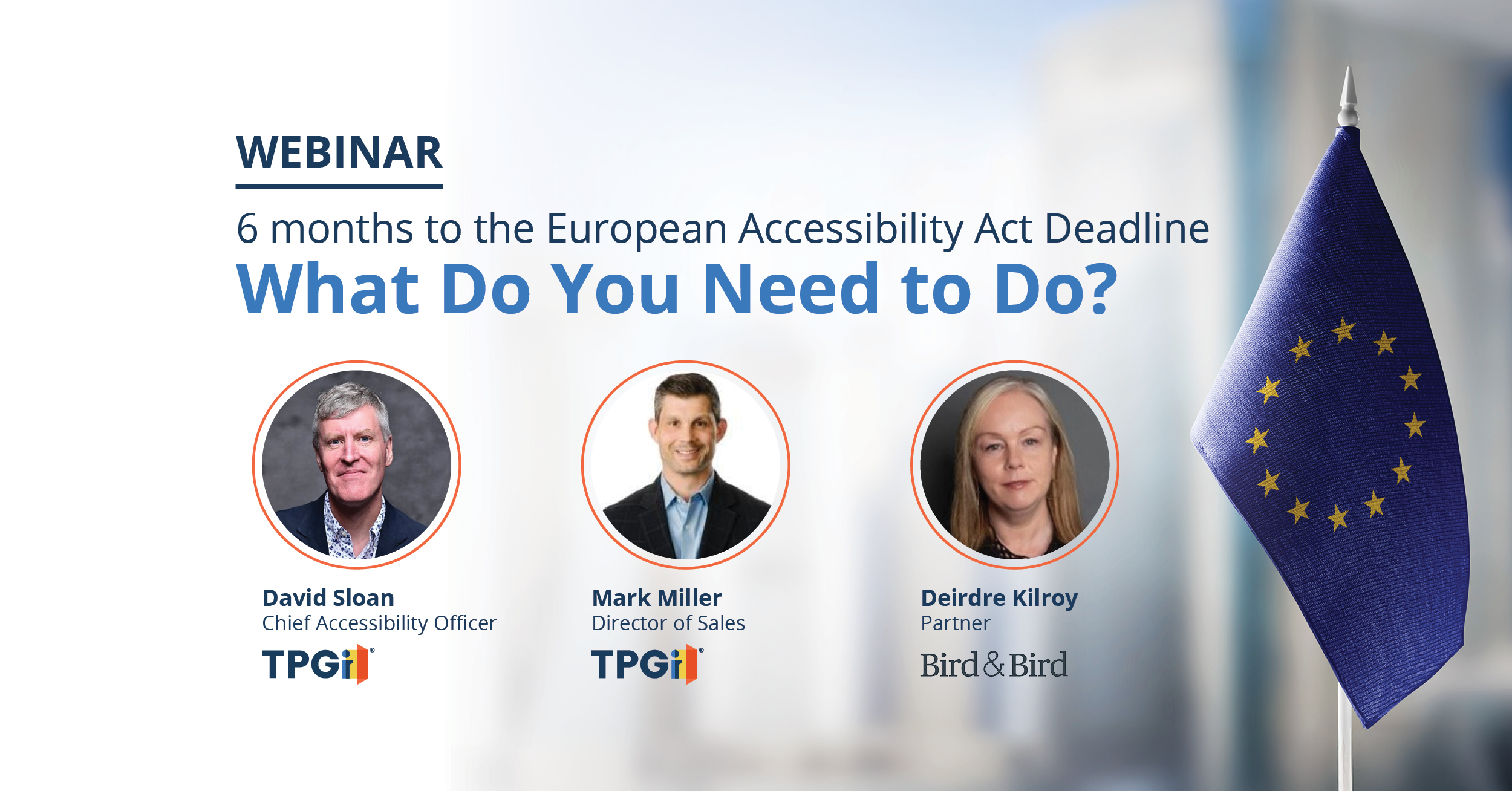European Accessibility Act (EAA) Resource Center
The European Accessibility Act Deadline is June 28, 2025. The countdown is on!
An Overview of the European Accessibility Act
Understanding EN 301 549: The European Standard for Digital Accessibility
Any company that wants to do business in Europe must meet the accessibility standards detailed in EN 301 549.
Understanding the European Accessibility Act (EAA)
The European Accessibility Act is designed to create equal access for Europeans with disabilities. This article will provide you with an overview of the EAA, important deadlines, risks of not conforming, and more.
EAA Resources
Understanding the Stanca Act, Italy’s Digital Accessibility Law
The Stanca Act, the Italian digital accessibility law, was an important milestone for web accessibility, helping increase access to information online and making public institutions more inclusive.
French Law 2005-102, RGAA and Web Accessibility
Law 2005-102 seeks to ensure equal access and opportunities for all people and prohibits unfair treatment and discrimination, including against individuals with disabilities.
Ireland Digital Accessibility Laws: EAA and Beyond
Now adopted into Irish law, the EAA is expected to play a central role in defining digital accessibility requirements in the country for many years to come.
The Netherlands’ Dutch Implementation Act and the EAA
This act aligns Dutch legislation with the European Accessibility Act (EAA) as well as a broader range of EU directives.
EAA Webinars
Navigating the European Accessibility Act: Your Roadmap to Compliance.
Check out TPGi’s on-demand webinar to learn about the European Accessibility Act.
6 months to the European Accessibility Act Deadline – What Do You Need to Do?
Join TPGi’s accessibility experts and legal professionals from the international law firm Bird & Bird, who will help you navigate the EAA’s requirements.
Frequently Asked Questions
The Web Accessibility Directive applies only to public sector organizations. The EAA applies to any organization that provides the products and services covered in the Act, including public and private sector organizations.
The Web Accessibility Directive applies only to websites and apps. The EAA also covers specified hardware products and software applications.
The EAA does not reference a specific technical standard for conformance, though as noted above, meeting EN 301549 should help to show conformance with EAA. The Web Accessibility Directive calls out WCAG 2.1 Level AA.
The EAA applies to all 27 countries in the European Union. International organizations that do business in the EU must also comply with the regulations.
Organizations that employ less than ten people and have an annual turnover of less than two million euros are exempt from the EAA.
Specific products and services could also receive an exemption if an organization can provide evidence that meeting EAA requirements creates an “undue burden” or changes their nature too dramatically (“fundamental alteration”).
- Additionally, the EAA includes exemptions for specific types of content such as:
- Pre-recorded time-based media published before June 2025.
- Office file formats published before June 2025.
- Online maps, if essential information is otherwise provided in an accessible way.
- Third-party content that is not funded, developed, or under the control of the organization that must be compliant.
- Archive content that won’t be updated after June 2025.
Installing an accessibility overlay on your website is unlikely to help you meet the requirements under the EAA.
Learn more about accessibility overlays and why they fall short in this.
Yes, the European Accessibility Act covers self-service devices including payment terminals and most interactive self-service terminals, including automated teller machines (ATMs), kiosks that issue tickets, check-in machines, and interactive information screens.
The EAA includes requirements for the accessibility of kiosk hardware and software user interfaces. Covered kiosks and self-service terminals installed in EU member states after the deadline of June 28, 2025, must meet the EAA requirements. However, kiosks already in use that do not meet requirements may continue in service for a maximum of 20 years after this deadline.
Download our EAA Self-Service Kiosk Compliance Fact Sheet.
Accessibility Tools and Resources
A Guide to Creating a Successful Digital Accessibility Program
Accessibility can be a big initiative at any company, requiring a lot of resources and time. This guide will explore what digital accessibility is and why–and how–your business should create a digital accessibility program.
TPGi’s ARC Platform
TPGi’s integrated accessibility management and testing platform allows your team to stay agile and manage multiple teams and data sets all within one robust platform.
Your Accessibility Partner
TPGi as a Service (TaaS) helps the world’s largest companies creating accessible and inclusive experiences for their customers. Partner with TaaS, for your accessibility audits, strategy development, training, UX services and more!
Accessibility Testing Tools
To create inclusive digital experiences, your team will need the right tools to stay agile and work efficiently. TPGi has accessibility tools to support your team from design, to management, to QA, and developers.
Speak with an accessibility expert at TPGi
Time is of the essence to start making progress to comply with the European Accessibility Act. TPGi can help expedite the process and ensure your team is on the right path. Schedule a call to discuss:
- How to conform with the EAA
- An accessibility strategy and roadmap for your team to follow
- Clear Direction on what to do first
- Your EAA and digital accessibility questions
Ready to start your EAA journey?
Speak with an accessibility expert about the EAA today!










